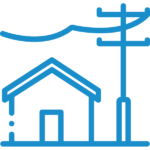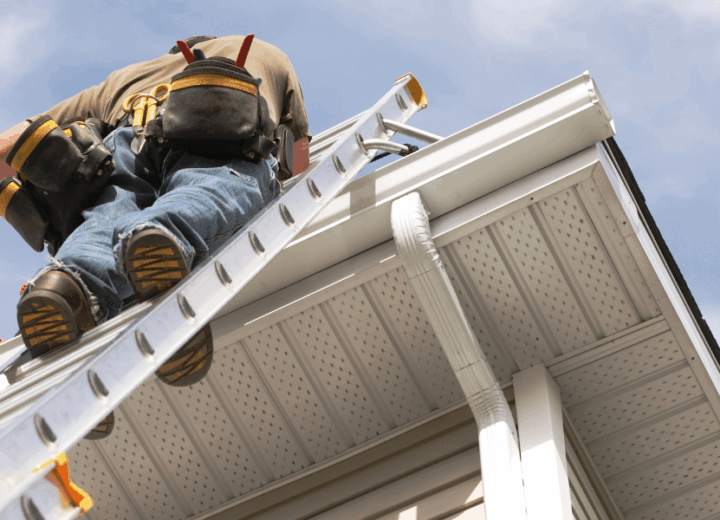As June brings the warmth of summer, it also kicks off National Homeownership Month, a great time to enjoy your living space and tackle home improvement projects. Whether you want to spruce up your outdoor area or handle ongoing maintenance, now is the perfect time to roll up your sleeves and get busy.
As you jump into these tasks, it’s important to keep safety top of mind. Check out these helpful tips to make sure you have a safe and enjoyable experience while working in your yard or on your home.
Working in Your Yard
 Never trim or remove trees and branches near power lines. If you have trees growing close to power lines, please reach out to the AEP Ohio Forestry team at 614-883-6987 or AEPOhioForestry@aep.com. They can schedule a time to meet with you to assess the area.
Never trim or remove trees and branches near power lines. If you have trees growing close to power lines, please reach out to the AEP Ohio Forestry team at 614-883-6987 or AEPOhioForestry@aep.com. They can schedule a time to meet with you to assess the area.
 Trees interfering with your service drop (the line running from our electric pole to your house) are the homeowner’s responsibility. Contact us at 800-672-2231 at least two business days in advance, and we’ll send a crew to disconnect the line so your private tree company can work safely.
Trees interfering with your service drop (the line running from our electric pole to your house) are the homeowner’s responsibility. Contact us at 800-672-2231 at least two business days in advance, and we’ll send a crew to disconnect the line so your private tree company can work safely.
 Before starting any project that involves digging, call 811 at least 48 hours in advance to have your underground utility lines clearly marked.
Before starting any project that involves digging, call 811 at least 48 hours in advance to have your underground utility lines clearly marked.
 Plan before you plant. Consider your desired location in relation to any nearby power lines and think about how tall and wide the tree could get. That way you can enjoy its beauty for generations without impacting the reliability of your electric service. Read more about planting the right tree in the right place.
Plan before you plant. Consider your desired location in relation to any nearby power lines and think about how tall and wide the tree could get. That way you can enjoy its beauty for generations without impacting the reliability of your electric service. Read more about planting the right tree in the right place.
 If you have a pad-mounted transformer in your yard, do not plant anything closer than 10 feet on any side with an opening, and keep at least 3 feet of distance from the other sides.
If you have a pad-mounted transformer in your yard, do not plant anything closer than 10 feet on any side with an opening, and keep at least 3 feet of distance from the other sides.
Working on Your Home
 Look up and look around! Be aware of overhead power lines when using ladders or long-handled tools. Use clean, dry wooden or fiberglass ladders, and always place ladders at least 10 feet away from any power lines.
Look up and look around! Be aware of overhead power lines when using ladders or long-handled tools. Use clean, dry wooden or fiberglass ladders, and always place ladders at least 10 feet away from any power lines.
 Keep cords and electrical tools away from heat and water. Only use power tools on circuits that can support their electrical requirements. Make sure to use heavy-duty, grounded three-wire cords and unplug tools when you’re not using them.
Keep cords and electrical tools away from heat and water. Only use power tools on circuits that can support their electrical requirements. Make sure to use heavy-duty, grounded three-wire cords and unplug tools when you’re not using them.
 Examine strands of lights and extension cords before using them. Ensure they’re rated for outdoor use and discard any that are damaged or frayed.
Examine strands of lights and extension cords before using them. Ensure they’re rated for outdoor use and discard any that are damaged or frayed.
 Protect your outdoor electrical outlets with weatherproof covers. If you don’t have ground-fault circuit interrupters outside, consider installing them as a safety measure.
Protect your outdoor electrical outlets with weatherproof covers. If you don’t have ground-fault circuit interrupters outside, consider installing them as a safety measure.
For more home safety tips, visit AEPOhio.com/Safety/Home.


